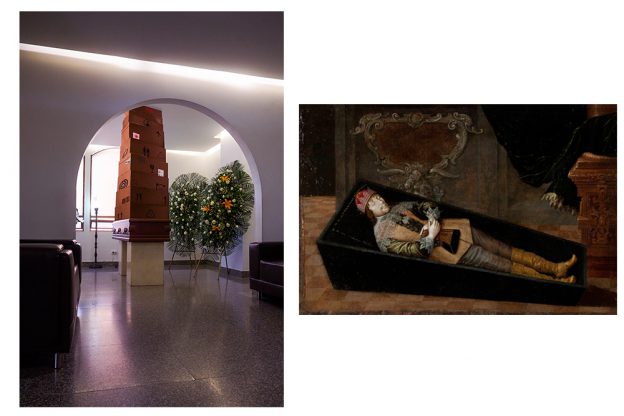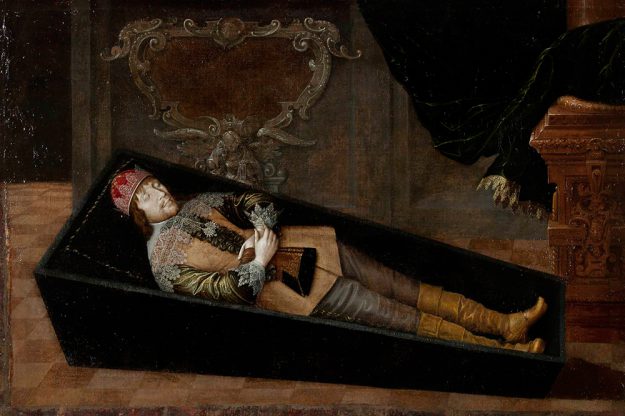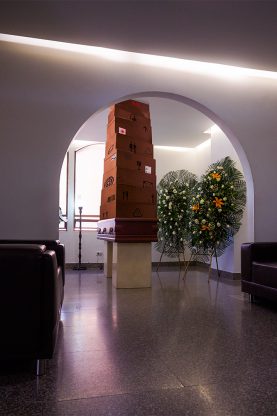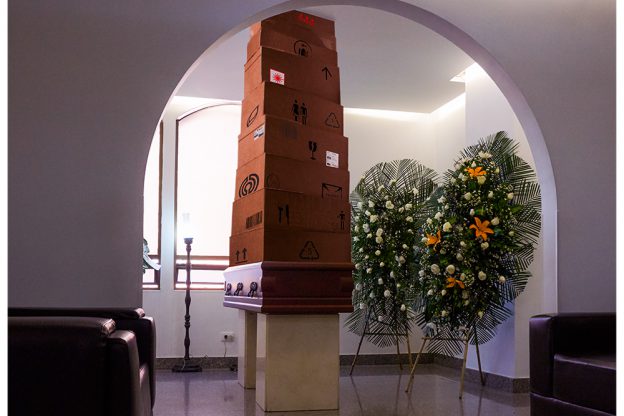»Ernestiner« trifft Bauhaus, Teil 5
»Ernestiner« trifft Bauhaus: Wir haben Künstlerinnen und Künstler der Bauhaus-Universität Weimar gebeten, Werke der Ernestiner-Ausstellung neu zu interpretieren und Ideen sowie Herangehensweise in einem kurzen Text zu beschreiben. Hier zeigen wir jede Woche ein Ergebnis.
Der Künstler Daniel Poveda hat sich das »Totenbildnis eines Fürsten im Sarg« gewählt. Seine Interpretation besteht aus zwei Teilen: einem Video und einer Fotografie.
»…deliver the souls of all the faithful
departed from the pains of hell and from the bottomless pit.
Deliver them from the lion’s mouth.
Neither let them fall into darkness
nor the black abyss swallow them up.«
Mozart Requiem – Offertorium –
»I wish being a beekeeper, which I am, gave you a free pass on the carbon footprint, but it doesn’t.«
Neil Gaiman

Christian Richter (1587-1667), Totenbildnis eines Fürsten im Sarg © Klassik Stiftung Weimar
»Sanctus … Sanctus…. Sanctus «; it is such an immaculate being, something that cannot be touched or modified because it has acquired an elevate status. It survives to the extent that seems it would end up outlasting us all.
Two vessels; static or in transition, are both halfway through a final resolution, either as a wreckage or about to be placed underground. Nevertheless, both give signs of enduring against the adversities.

Daniel Poveda, »Back and forth – a requiem«, 2016, 2 components: 1. Singe channel Video: 1280 x 720, Quick time video, 3´37”, In Stereo. 2. Photograph: 100 x 145 cm, Digital photo, 300 dpi © Daniel Poveda
This Requiem reflects on what is buried and what remains not just in the memory, taking into account certain differences that bodies can leave traces among epochs, being here the case, pre and post- industrial, hence, coming from images such as the one with the German prince in his coffin from Christian Richter (1587-1667) – Totenbildnis eines Fürsten im Sarg – or those related closely within a trading system.
Therefore, Art also becomes that vessel by which either through painting as a vehicle for the memory or through more recent visual representations, giving altogether descriptions of the body and its willingness to leave traces.
Then, what is in fact transcending in relation to the body on the last container in the verge of disappearance?
Modern sciences can provide some clues after the Carbon footprint and its emission records , which are now a way for accounting our lifespan deeds; our most persistent and so far inescapable contribution.

Daniel Poveda, »Back and forth – a requiem«, 2016 © Daniel Poveda; Christian Richter (1587-1667), Totenbildnis eines Fürsten im Sarg © Klassik Stiftung Weimar
Henceforth, the lament, the plea for the departed, is not just for its memory or its physical record, it would be for a better resolution of what is coming ahead, the plea is for the species and the fantasy of transcendence when supported of a system that despite its many evidences of deficiency seems being recued once and again from the pit.









